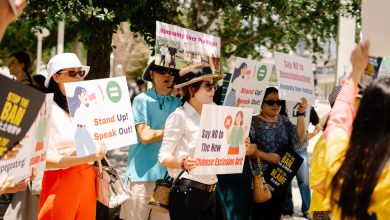Is There a Post-Religious Right?

During the 2016 Republican campaign, watching Donald Trump shoulder his way past his more pious rivals for the nomination, I remarked on the platform then known as Twitter: “If you dislike the religious right, wait till you meet the post-religious right.”
This apothegm has often been quoted back to me, and this month Compact magazine’s editor, Matthew Schmitz, quoted it in order to offer a critique. My one-liner “captured a widely shared assumption” that Trump’s rise signaled “the birth of an irreligious right animated by white racial grievance,”he wrote. But that’s not how history has played out, Schmitz said:
All this is drawn from a First Things profile of J.D. Vance, the junior senator from Ohio, whom Schmitz portrays as a potential spokesman for a new religious populism, distinct from the George W. Bush-era religious right but no less influenced by Christian faith.
I recommend the piece, and I entirely agree with Schmitz that Trump-era conservatism can have a religious face and that relative to expectations in 2015 and 2016, the white-identitarian side of Trump’s political pitch has ended up having less influence on American political alignments than the pan-ethnic and class-based aspects of his appeal. And Trump’s transactional approach to culture-war issues ended up delivering more for the religious right than might have been expected, yielding the stronger alignment in 2020 (and probably 2024) that Schmitz describes.
But when Schmitz says a post-religious right has “failed to materialize” I have to strongly disagree. There are various forms of post-Christian conservatism that are clearly more potent today than they were 10 or 20 years ago — as you would expect in a nation where Christian affiliation and observance have substantially declined and where the Republican Party has been dominated for almost a decade by a man whose personal faith a perspicacious writer once described as a form of Norman Vincent Peale-ian positive thinking in which the Christian residue has “curdled into pagan disdain.” (That writer was Schmitz.)
Here are a few ways that you could categorize those forms. First you might simply note the growing share of nonchurchgoers in the ranks of American conservatives. The unchurched were a big Trump constituency in the 2016 primaries, and they’ve become an increasingly important part of the Republican coalition overall: As Ryan Burge points out, in 2008, 29 percent of Republicans reported that they “seldom” or “never” attended church; by 2022 it was 44 percent.
True, many of these nonattenders are still culturally Christian; Republicans do increasingly well, for instance, with voters who say that religion is very important while rarely showing up on Sunday. And cultural Christianity is not the same thing as paganism or unbelief.




